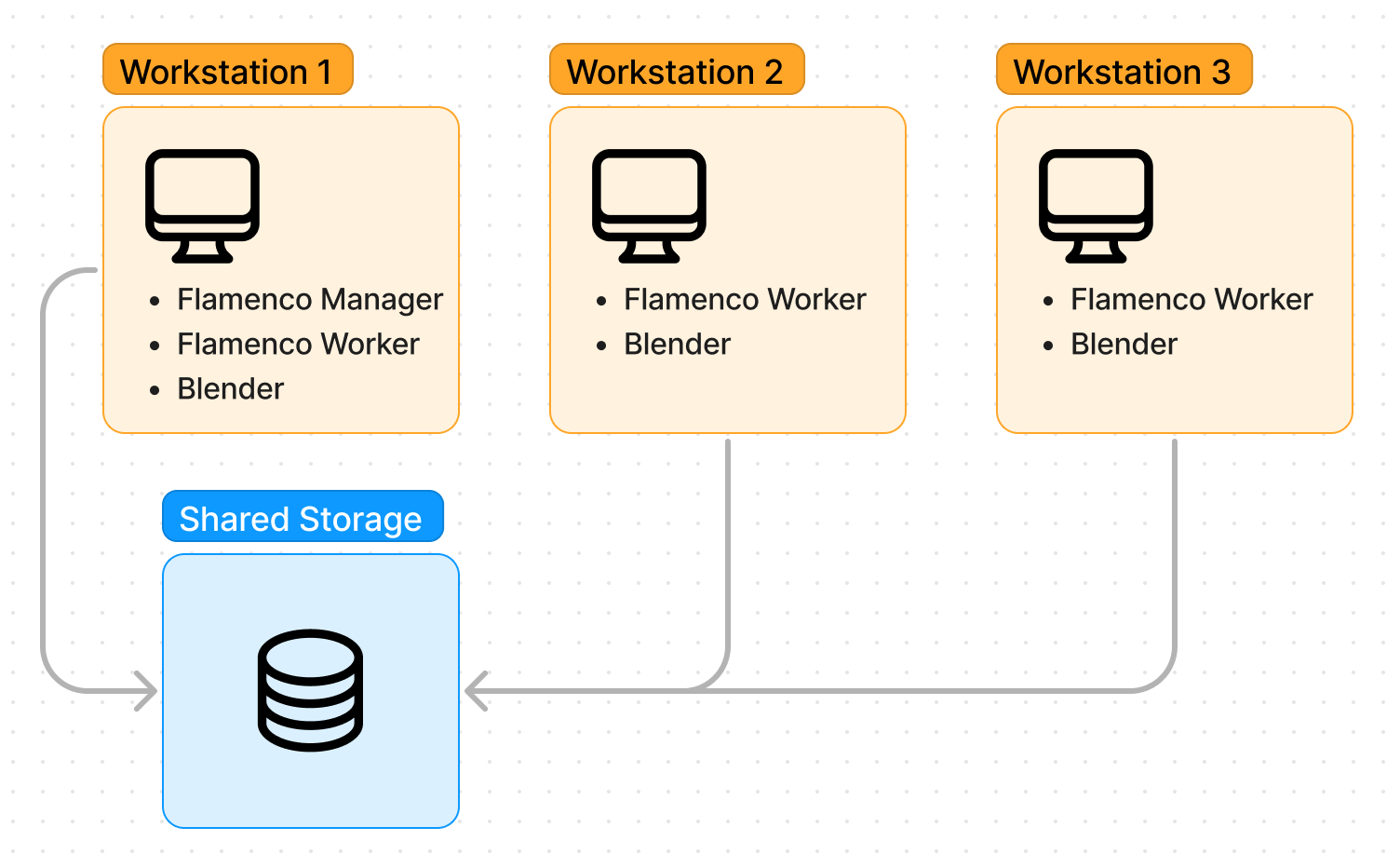About
Flamenco is a lightweight, cross-platform framework to dispatch and schedule rendering jobs for smaller teams, or individuals.
Blender Studio uses Flamenco in production with a handful of servers (scaling up to hundreds of servers on demand), and combines those with desktop workstations when they’re not used by the artists.
The Flamenco project distributes executables and a Blender add-on to install and run (downloads).
As the Blender.org project is built on free and Open Source software, Linux is the main platform Flamenco is developed against. Windows and MacOS will also be supported, but on a best-effort basis with help from the community.
 Example of a Flamenco configuration.
Example of a Flamenco configuration.
The following principles guide the design of Flamenco:
Flamenco is a true blender.org project. This means that it’s Free and Open Source, made by the community, lead by Blender HQ. Its development will fall under the umbrella of the Pipline, Assets & IO module.
Because Flamenco is aimed at small studios and individuals, it won’t offer much in terms of user authentication, nor the organisation of users into groups. Custom job types can be used to attach arbitrary metadata to jobs, such as the submitter’s name, a project identifier, etc.
Running Flamenco should be extremely simple. This means that it should depend on as few external packages as possible. Apart from the Flamenco components themselves, all you need to install is Blender. The downside of this is that development might take longer, as some things that an external service could solve need to be implemented. This trade-off of developer time for simplicity of use is considered a good thing, though.
Instead of stopping with a description of what’s wrong, like “no database configured”, Flamenco should show something helpful in which you’re guided towards a working system.
Studio pipeline developers / TDs should be able to customise the behaviour of Flamenco. They should be able to create new job types, and adjust existing job types to their needs. For this, Flamenco uses JavaScript to convert a job definition like “render this blend file, frames 1-100” into individual tasks for computers to execute.
Like Blender itself, Flamenco should be able to fully work offline. That is, work without internet connection. If any future feature should need such a connection, that feature should always be optional, and be disabled by default.
Data should be stored as plain files whenever possible. Where a higher level of coordination is required, an embedded database can be used; currently Flamenco uses SQLite for this.